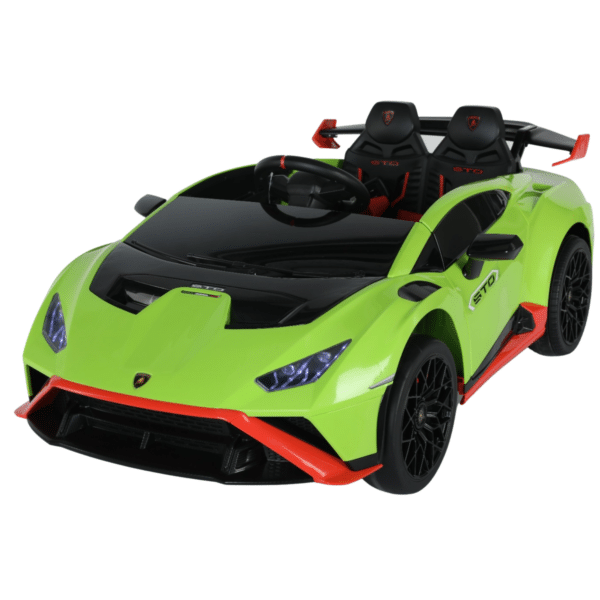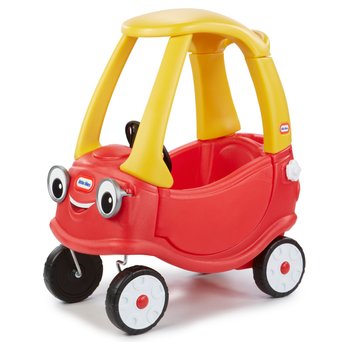Excellent Tips To Picking Ride On Toys
Excellent Tips To Picking Ride On Toys
Blog Article
What Safety Features For Ride-Ons Should I Look At? Pros And Cons
If you are considering a ride-on automobile for your child the safety features must be considered to ensure their well-being while playing. Here are some important safety features to think about as well as their advantages and disadvantages - Seat Belts -
Seat belts can help ensure your child's safety and decrease the chance that they will fall from the vehicle or be ejected. They also provide extra protection especially during sudden stops or changes.
Cons - Not all ride on automobiles have seatbelts. This is especially true for those specially designed for children younger than. Children may also find seat belts to be uncomfortable or restricting, leading them to refuse or refuse to use them.
Sturdy Construction
Pros - A ride-on that has an extremely solid structure and top-quality materials is durable and resistant, and will provide safety and security for a long time. It's durable and sturdy enough to stand up to the demands of playtime.
Cons - Durable construction comes at a high cost, which could make it unattainable for many families. Ride-on vehicles may be less mobile and maneuverable in the event that they are constructed of heavy materials.
Low Center Gravity
Pros - Cars with lower centers of gravity have a lower chance to overturn which decreases the likelihood of accidents or injuries. They offer better balance and stability, particularly during turns or maneuvers.
Pros - Ride-ons that have low center-of-gravity could sacrifice ground clearance in order to be off-road capable. This can restrict the range of riding.
Remote control for parents'
Pros: Parents can monitor their children's activities and offer assistance to ensure security and control. Parents can intervene during emergencies and navigate treacherous terrains or avoid collisions.
Cons - Parental remote control can limit children's independence and autonomy, as they rely on parental guidance and assistance during play. Furthermore, models that can be operated remotely could cost more than models that have manual controls.
Speed Limiters
Pros: Ride-on cars that have speed limiters, or speeds that can be adjusted enable parents to control the maximum speed, and decrease the risk for accidents or collisions. Parents can raise the speed of the ride-on car as their child grows more confident and skilled.
Cons - Some kids will get bored with lower speed settings, which can lead to frustration and discontent. Some models may not have speed limiters, or require additional features or accessories.
Safe Start Technology -
Pros - Safe Start technology ensures that the ride-on automobile is able to stop and start up without a hitch, eliminating the danger of lurches or sudden jerks that could startle or destabilize the child. It ensures a safer and more comfortable riding experience.
Cons - Ride-on cars with safe start features might cost more than the basic cars without this feature. Moreover, some children might feel that slow acceleration and deceleration are not as enjoyable or thrilling than instant starts and stops.
Visibility Enhancements -
Pros: Ride-on vehicles with increased visibility like headlights and taillights that work or reflective materials can increase visibility in dimly lit or low lighting conditions. They increase safety because they make the vehicle visible to other vehicles or pedestrians.
Cons - The addition the features that allow for visibility could add battery consumption or increase the complexity within the design of the ride-on car. These factors could cause malfunctions or maintenance problems.
Take a look at these security features take a look at their advantages and disadvantages and choose a ride on car that will prioritize your child's safety while providing an enjoyable and fun time. Take a look at the top rated McLaren kids car for more recommendations including remote control childrens electric cars, two seater childrens electric cars, childrens digger, digger ride, toy car toy car, childs electric ride on car, electric ride on cars, toy in car, car toy car toy, toy toy cars and more. . 
What Is The Assembly And Maintenance Conditions For Children's Ride-On Vehicles?
It is common for kids' ride-on car to require assembly and also ongoing maintenance, in order to achieve optimal performance and safety. Here are some typical maintenance and assembly requirements for children's ride-on cars:
Most ride on cars are partially assembled upon arrival, and need some sort of assembly. Connecting steering wheels, wheels seats, and accessories as per the instructions provided by the manufacturer is usually required.
Please follow the instructions to assembly in order to make sure that all components are properly attached and aligned. Utilize the tools and hardware to complete assembly.
Cleaning -
Regular cleaning is essential to ensure that the car you ride on is in top condition and operating properly. Use a dampened soft cloth using mild soap and water to clean exterior surfaces.
Pay particular attention to areas that are susceptible to accumulation like undercarriage, tires and wheels. To clean the grime and dirt that is difficult to remove make use of a toothbrush or brush to reach those areas that are difficult to reach.
Avoid using harsh chemical cleaners, abrasive chemicals, or high-pressure water sprays, as these may harm the paint or electronic components of the ride-on automobile.
Battery Care
Care for your battery is vital for any ride-on powered by rechargeable batteries. Proper battery care will maintain performance, and increase battery life. These guidelines will aid you in maintaining your battery.
The battery must be fully charged before and after each use to extend the runtime.
Avoid overcharging or leaving the battery hooked to the charger for long time, as this could harm the battery and shorten the battery's lifespan.
When not being used, store the ride-on car and the battery in a cool, dry place far from direct sunlight.
Check the battery terminals frequently for signs of damage and corrosion. Clean the terminals with a cleaning tool or wire brush if necessary.
If the battery is no longer charging or has signs of wear, replace it.
Tire Maintenance -
Examine the tires frequently for signs of damage, wear, or loss of pressure. Inflate the tires to the recommended pressure using the bicycle pump or an air compressor if needed.
The tread pattern needs to be checked for debris, foreign objects or other obstructions that could cause flats. Repair or replace damaged tires by clearing any obstructions.
Lubricate the axles, wheel bearings, as well as other components to ensure a smooth rotation.
Sometimes, repairs and replacements are needed.
Even with regular maintenance, ride-on vehicles may require occasional repairs or replacement parts due to wear and wear or damage caused by accident.
Pay attention to indications of deterioration and malfunction like unusual noises, loss of power or unusual behavior. Refer to the manufacturer's guidelines or call Customer Support for help troubleshooting.
Replace worn out or damaged components as soon as possible to prevent any further damage, and to ensure the security and functionality of the vehicle that rides on.
These assembly and maintenance instructions will assist you in keeping your child's ride on car in good condition, allowing them to enjoy safe and fun playtime. Follow the most popular read more about Audi kids car for website info including toy in car, childs car toy, toy and car, ride ons, childrens ride on, a toy car, ride electric car, car for toy, car electric ride on, toy toy cars and more. . 
What Types Of Childrens Remote Control Cars Are Available? What Are The Pros And Cons Of These Cars?
Remote control vehicles for children Also known as RC or remote-controlled cars, are available in a variety of designs, sizes and costs. They are designed to meet the needs of different tastes and budgets. This article provides an overview of the different types, sizes and prices of children's remote controlled cars and their pros and cons.
Electric RC Cars – Batterie-powered remote-controlled cars that are suitable both indoors and out. They are available in various styles, such as buggies and trucks.
Nitro RC Cars – Gas-powered remote controlled cars with greater performance and speed However, more expertise and maintenance is required for operation. They tend to be bigger and more expensive than electric RC vehicles.
Scale Models - Remote-controlled replicas of real-life vehicles, such as trucks, cars, boats, and airplanes. Scale models range from 1-10 to 1-24, with larger scales providing more detail.
Sizes -
Remote control cars for children come in a range of sizes, ranging from tiny miniature models to huge-scale replicas. The size of the car can influence the efficiency of a car as well as its speed and its handling characteristics.
Micro-sized cars which are lightweight and compact, are great to be used indoors or by children who are younger. Larger-scale cars are more powerful and durable making them ideal for off-road racing as well as outdoor racing.
Prices
The cost of remote-controlled children's cars vary depending on factors such as the size, features, brand and build quality.
Micro-sized electric cars can be purchased for $20-$100 while larger electronic and nitro-powered models can cost between $100 and $500 or more.
Scale models as well as high-end hobby-grade RC cars range from several hundred dollars up to 1000 dollars, based on the degree of detail and speed.
The Pros and Cons of -
Pros -
Entertainment - Children's remote controlled automobiles can bring hours of entertainment and excitement for both children and adults.
Skill Development - Operating an RC car helps children develop hand-eye coordination, spatial awareness, and problem-solving capabilities.
Social Interaction RC cars are fun to play with friends and family, promoting social interaction and cooperation.
Customization - A lot of RC vehicles can be upgraded with upgrades and accessories, which will improve their performance as well as appearance.
Cons
Costs - A premium model that comes with the latest features could be expensive, especially hobby-grade models.
Learning Curve - Operating an RC car requires some practice and. Children younger than 10 may struggle to control the controls.
Maintenance: Cars in RC require regular maintenance that includes cleaning regularly, oiling, and replacing parts or repairs.
Safety concerns - RC car safety can be compromised due to electrical hazards, collisions as well as other risks if the cars are not operated with care and supervision from an adult.
In general, remote-controlled children's cars offer a thrilling and educational experience for children of all ages, but it's important to think about factors such as dimensions, cost features, safety, and size when selecting the best car for your child. Hobby-grade RC cars may be more appropriate for older children and those who are avid, while less complex models are ideal for younger youngsters and those who are just beginning. View the best ride on toys kidscars.co.uk tips for more advice including childrens digger, two seater electric cars, 2 seater electric cars, childrens electric cars, toy with car, electric car ride, remote control childrens electric cars, toy in car, childs ride on car, car electric ride on and more. .